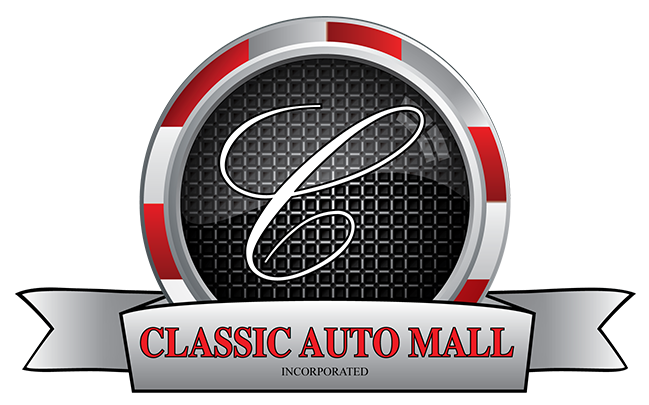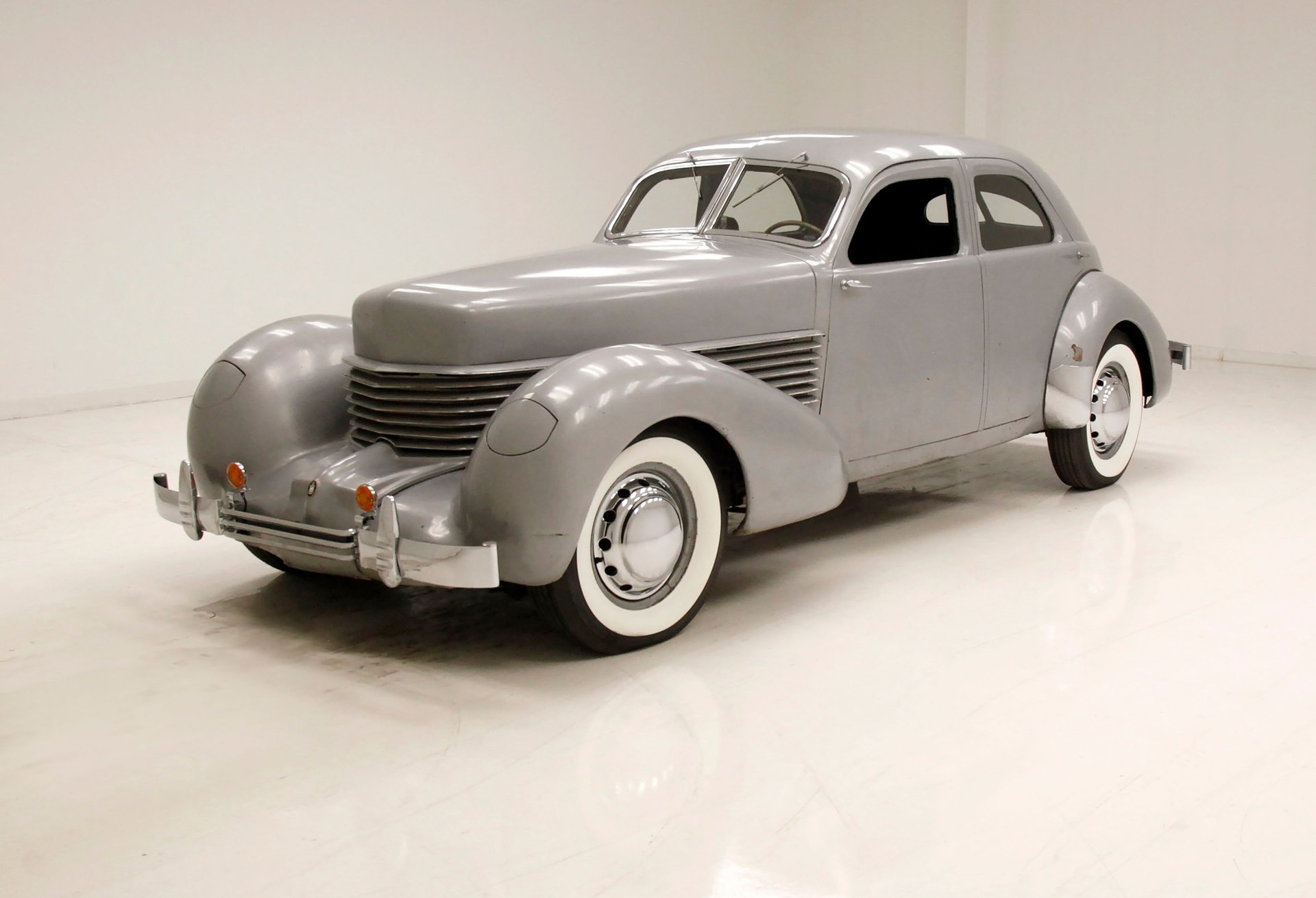1936 Cord
810 Westchester
Convert Currency
- Body Color
- Gray
- Stock
- 3611
- Engine Size
- 288ci Lycoming V8
- Transmission Type
- 4 Speed Semi Automatic
- Vin
- 1333A
- Miles
- 37,501
- Drivetrain
- FWD
1936 Cord 810 Westchester
1936 Cord 810 Westchester Sedan
The 1936 Cord is counted as the most striking and innovative car of its time. Mechanically it was way ahead of its peers. Cord was the first mass-production auto offered with front-wheel drive. The elimination of the rear drive train allowed the car to be so low, running boards were unnecessary. It also featured an “alligator” style hood hinged at the rear, “coffin” front-end styling, concealed door hinges, and teardrop shaped fenders. The disappearing headlights are individually raised and lowered by hand-cranks located on the dash in front of the driver and passenger. Many of these features influenced other manufacturers' designs in the years ahead. When it was unveiled at the New York Auto Show in November 1935, this car caused a sensation. Unfortunately, with so many new features that had not been adequately tested in advance, the Cord gained a reputation for being gorgeous, but unreliable. Thanks to the Heritage Museum for the info.
For consignment, from a 90-year-old collector who does not have it in him to restore this wonderfully innovative car, a 1936 Cord 810 Westchester. Many modern-day features are within this car's design, not the least of which is front wheel drive. Very stylish, very low to the ground and just a beautiful line throughout, this car will need some TLC on the bodywork, and mechanicals particularly the electrics.
Exterior
The Model 810/812 are probably the best-known of the company's products. Styled by Gordon M. Buehrig, this car features front-wheel drive and independent front suspension. Having front drive enabled the model 810 to be built so low, to render running boards unnecessary. Something not often seen in the mid 1930s. The car caused a sensation at the New York Auto Show in November 1935. Orders were taken at the show with Cord promising Christmas delivery, expecting production of 1,000 per month. Production delays pushed the expected delivery date to February 1936. This still proved optimistic – the first production vehicles were actually delivered in April. In all, Cord managed to sell only 1,174 of the new 810 in its first model year. The car is well known for its flat front nose with a horizontal louvered grille design instead of the common radiator-style grille, that made its nose resemble a coffin, earning it the nickname of "Coffin Nose". This combined with the hidden headlight pontoon like fenders and long flat area beneath the nose and fenders, it is a very unusual design but nonetheless striking. A split windscreen which is swept rearward, meets up with the rounded roofline that melts into the back of the car via a split rear half oval back glass. The rear fenders, also pontoon inspired, meet up with the downward sloping trunk deck and end up on top of the rear bumper. 16 inch chromed and polished steel wheels are rolled and wrapped with wide whitewall tires. The condition of the exterior surfaces is rough in spots, wear off of the silver paint, and some of the chrome trimmings are showing some rust beginnings.
Interior
Inside, a royal blue felted broadcloth covers most all surfaces including the lovey door panels. The doors are suicide doors with the latch in the front of the door, and these doors have hidden hinges something else not seen in other cars of this era. Shiny window cranks and an actuator along with a painted silver frame gives an expensive look. Inside a front bench also in royal blue felted broadcloth sit in an upholstered curved arm tub. Silver piping and a silver bolster separates the seat from the fronts. In the back accessible by another set of doors, the curved arm rear bench has the arms rust to the ceiling panels and surround the window of the rear glass. More piping in silver and some worn blue carpeting is noted in the back. The headliner is also blue broadcloth with silver piping ribs where the panels are stitched together. The dash is in blue with a large machined swirl pattern panel to house the round instruments, bakelite knobs and throttle and choke sliders. It is in a bit of a rough condition but no rust, just very dirty. The select shifting is seen on this car and a white painted but chipped off column and bog bakelite steering wheel is noted. On the floor in front is a brick pattern linoleum floor.
Drivetrain
Under the “Coffin Hood” is an original 288ci Lycoming V8 named after the company out of Williamsport, Pennsylvania and manufactures aircraft and automobile engines. It has a single 2-barrel carburetor and a 4-speed “select shift” semi-automatic transmission. The rear axle is a hefty 4.30 gear ratio. This engine presents in good condition and appears to be an earlier restoration.
Undercarriage
Plenty of road dirt, some earlier rustproofing which is wearing off and surface rust are noted underneath. A new fuel tank, lines, and sending unit are installed. New drum brake linings are in, and independent front and leaf spring rear suspension are on. Several rubber hoses have also been replaced.
Drive-Ability
She started right and off to the test track I went. This car is interesting to drive, as it no longer has the clutch start, but a push button under the dash. With the clutch in I selected first gear and we're off after letting out the clutch. To shift I moved the selector on the column shifter to second, and when ready to go to the next gear, press in the clutch, let it back out and Viola! it works, and I'm now in second. The car shifted smoothly, had decent braking and rides beautifully. Our consignor states it should have a new wiring harness to make it more reliable, and the carburetor could use a rebuild as should the generator.
A very interesting car of which not too many were sold due to the depression. Plenty of stars of the era had a Cord, mostly the ones that had the side pipes emanating from the side hood cowl. This one is a very clean design, with hidden headlights that need cranked but do rise to the occasion. Some TLC on the body and paint, and a few mechanical brush ups and you're in business, moving picture star style!
Classic Auto Mall is a 336,000-square foot classic and special interest automobile showroom, featuring over 650 vehicles for sale with showroom space for up to 1,000 vehicles. Also, a 400 vehicle barn find collection is on display.
This vehicle is located in our showroom in Morgantown, Pennsylvania, conveniently located just 1-hour west of Philadelphia on the I-76 Pennsylvania Turnpike. The website is www.classicautomall.com and our phone number is (888) 227-0914. Please contact us anytime for more information or to come see the vehicle in person.


